Expanding Brackets Worksheets
Expanding Brackets and Simplifying - Using Algebra Tiles
Year groups: 8, 9
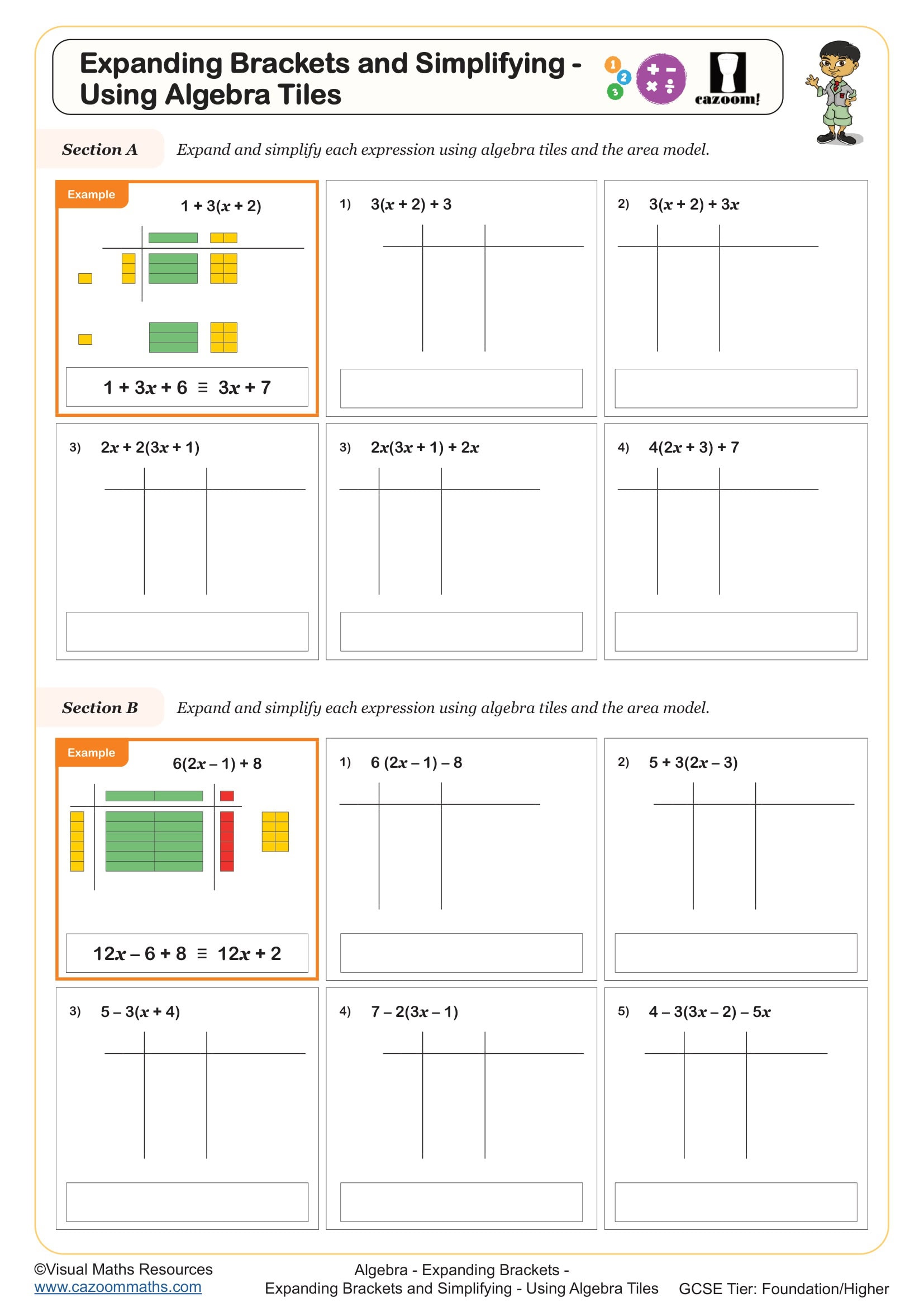
Expanding Double Brackets (A) Using the Grid Method
Year groups: 8, 9, 10
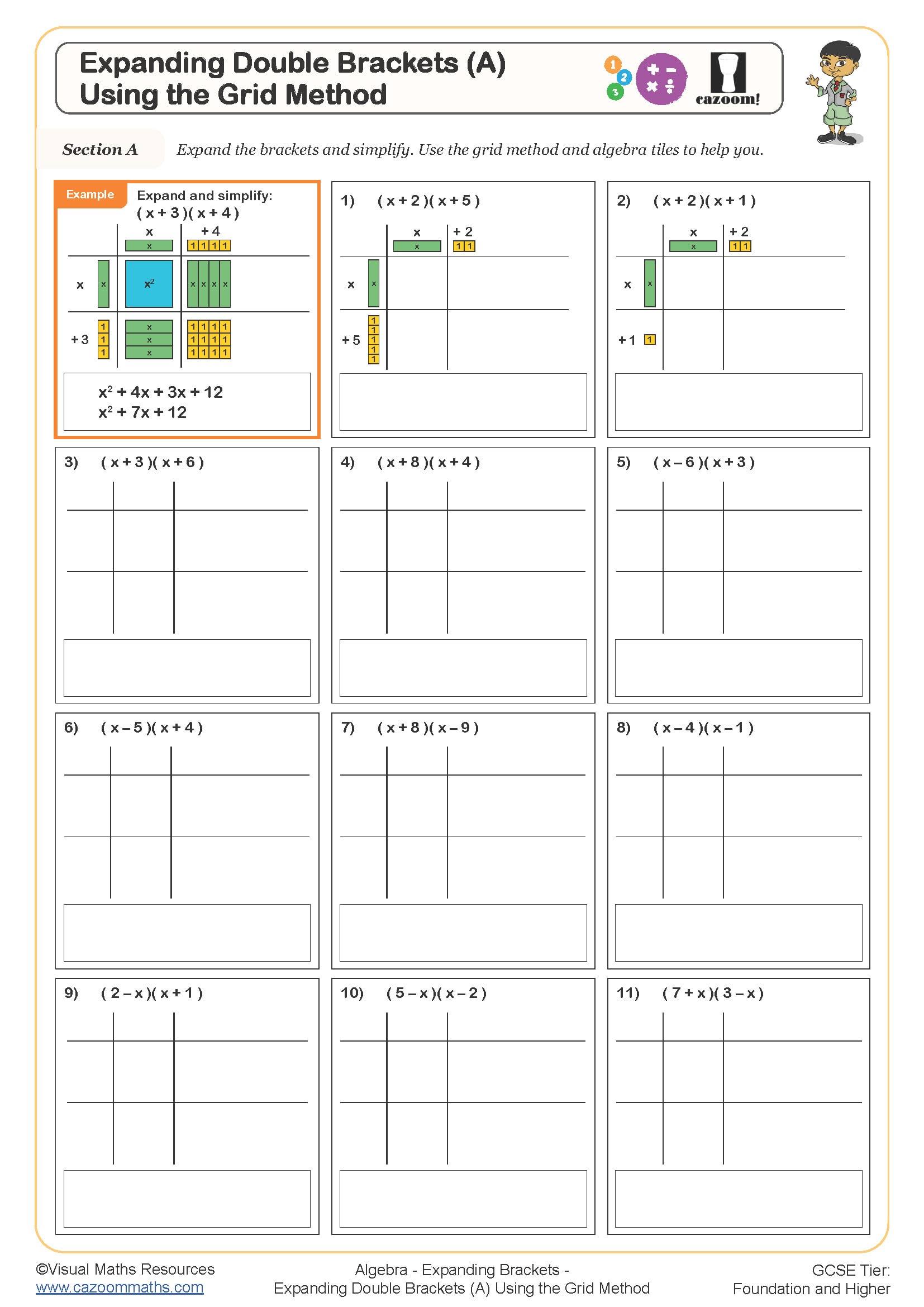
Expanding Single Brackets
Year groups: 8, 9, 10
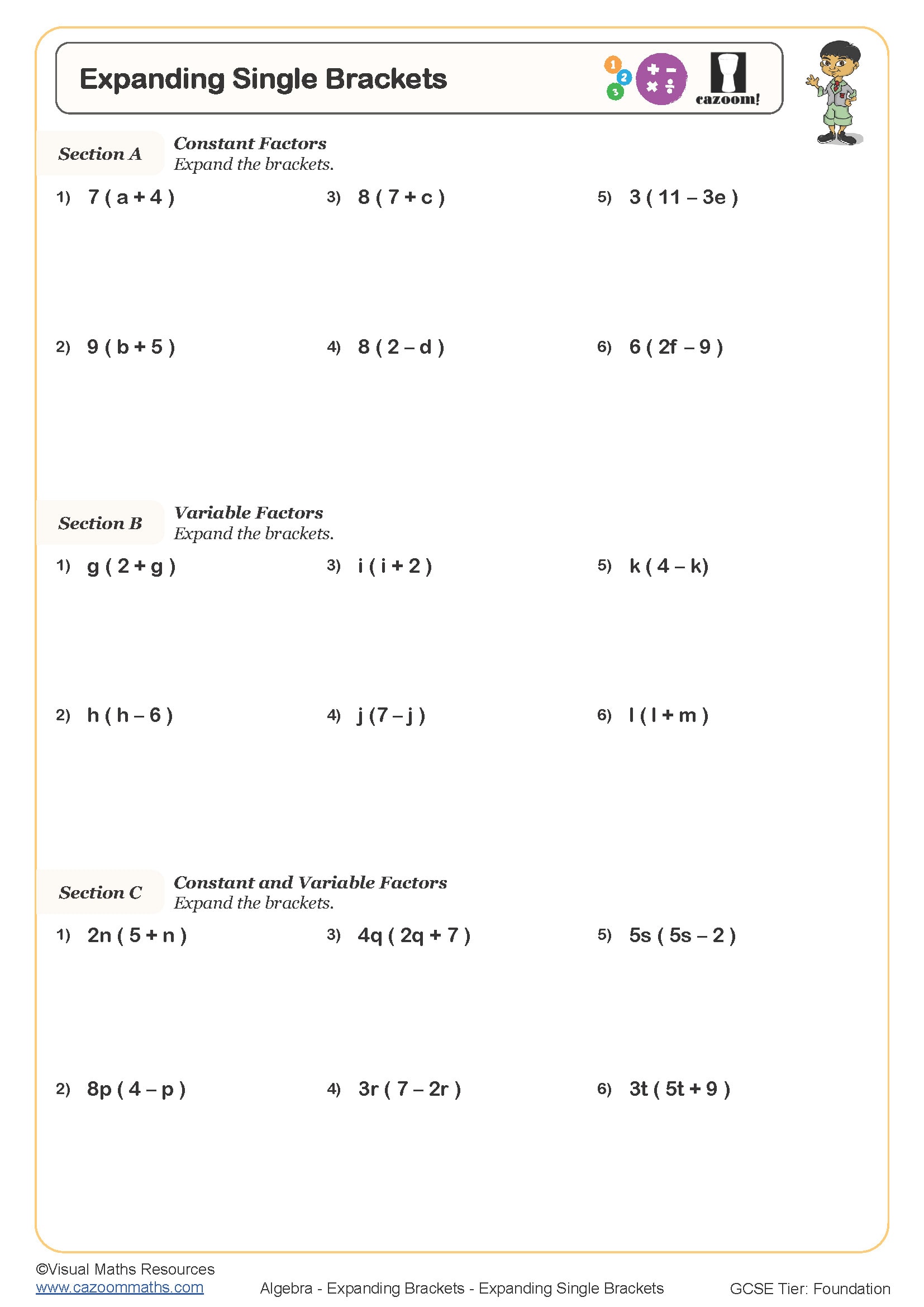
Expanding Single Brackets - Using the Grid Method
Year groups: 8, 9
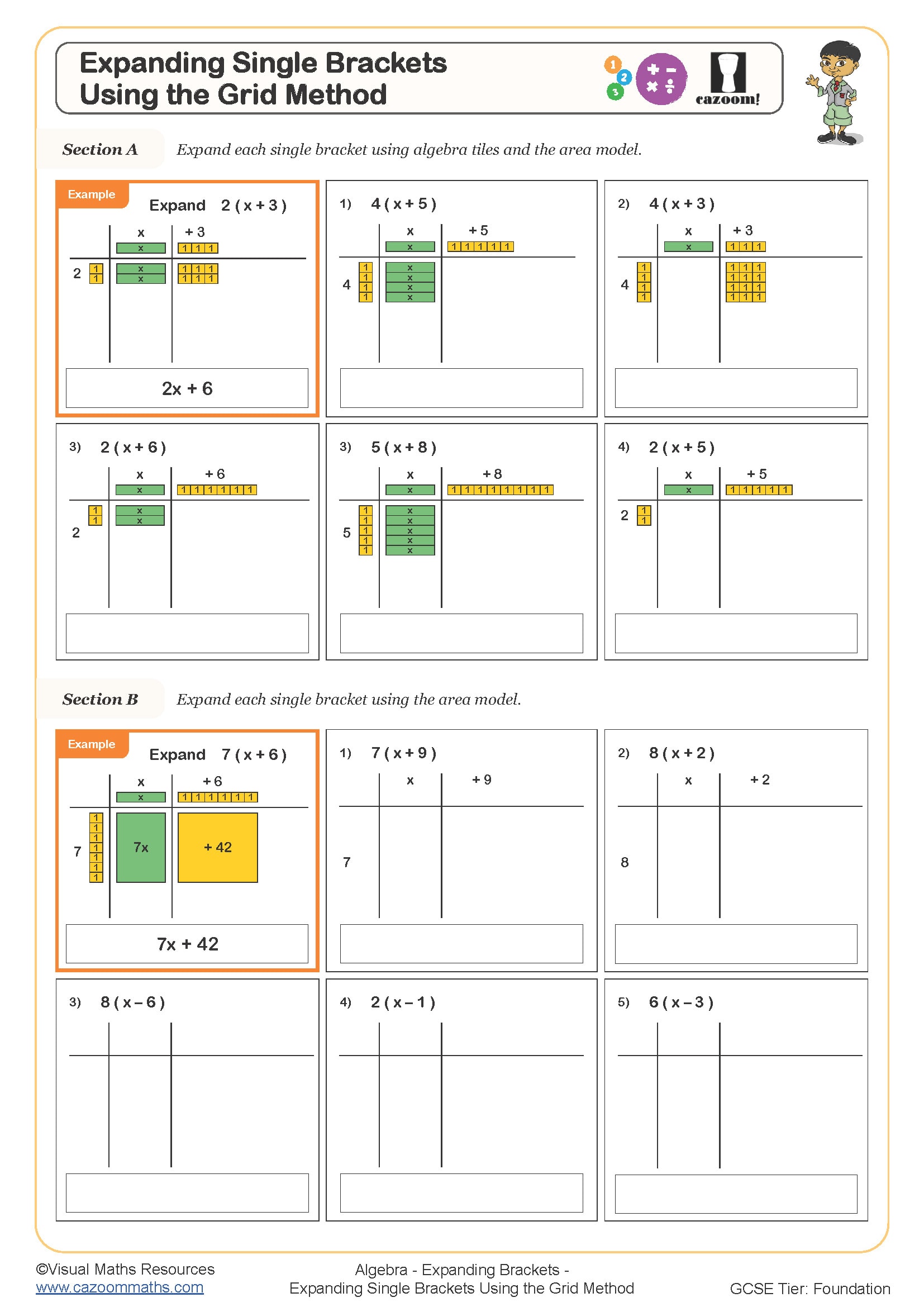
Expanding Brackets and Simplifying
Year groups: 9, 10, 11
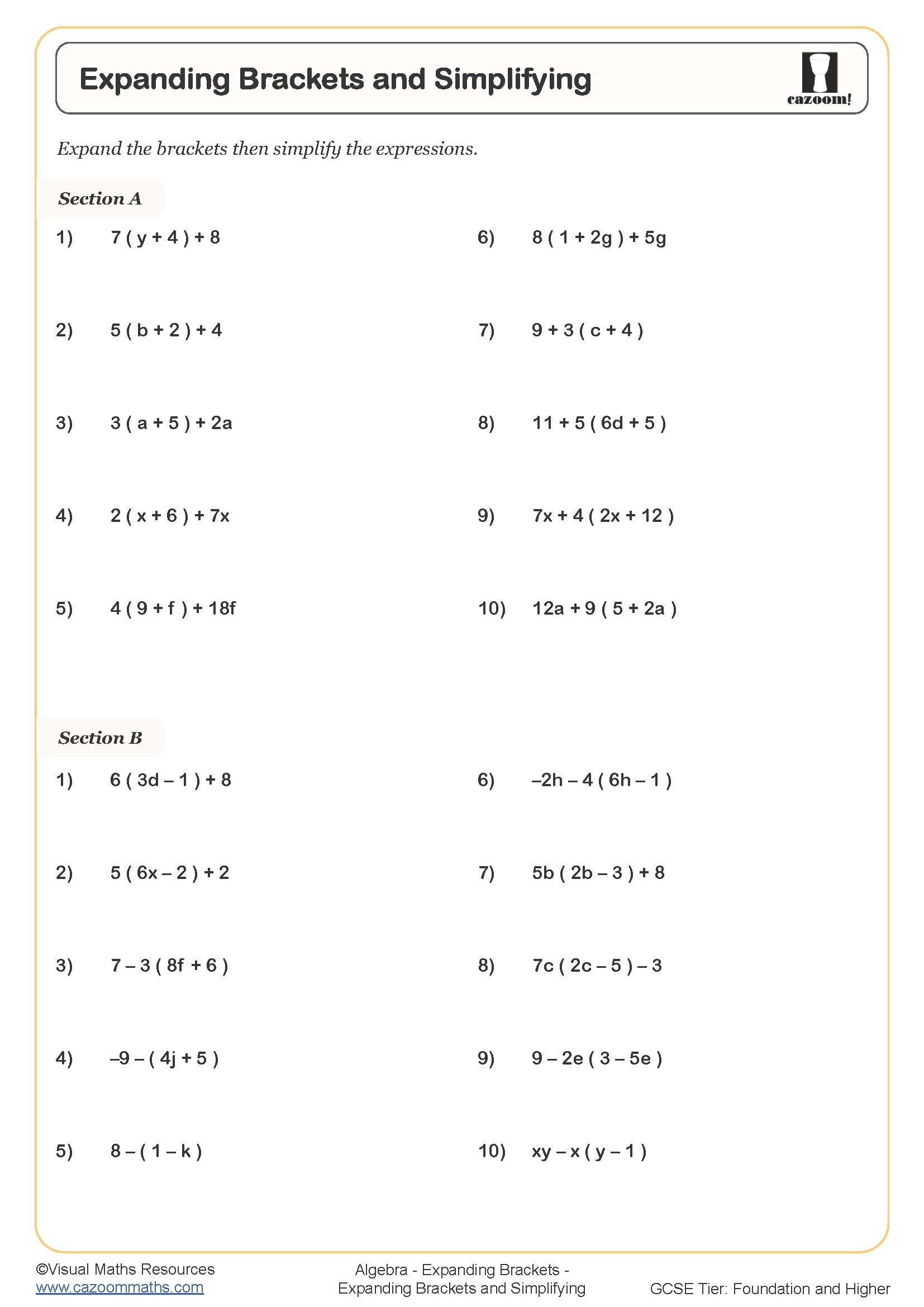
Expanding Double Brackets (B)
Year groups: 9, 10, 11
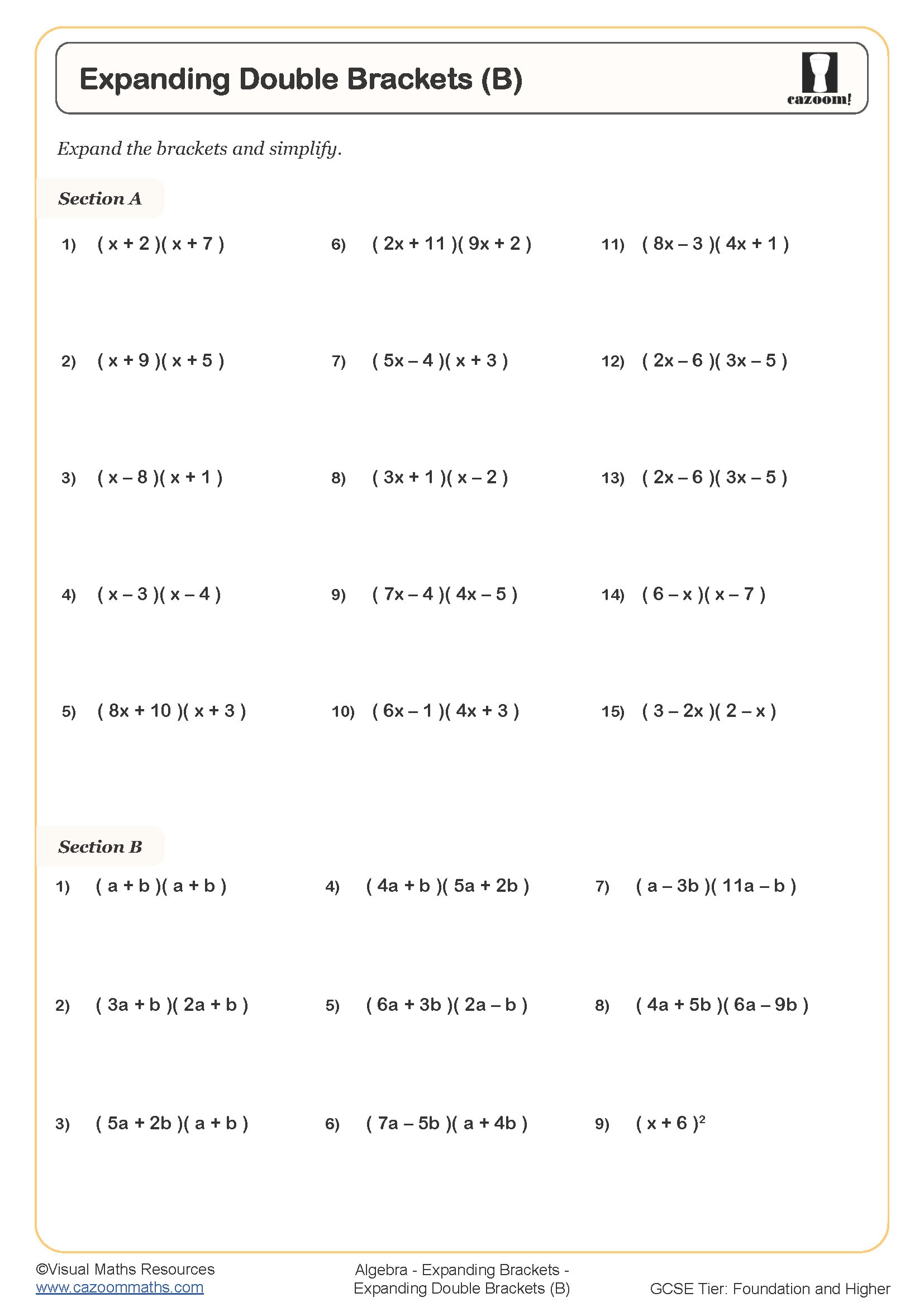
Expanding Double Brackets with Surds - Using the Grid Method
Year groups: 10, 11
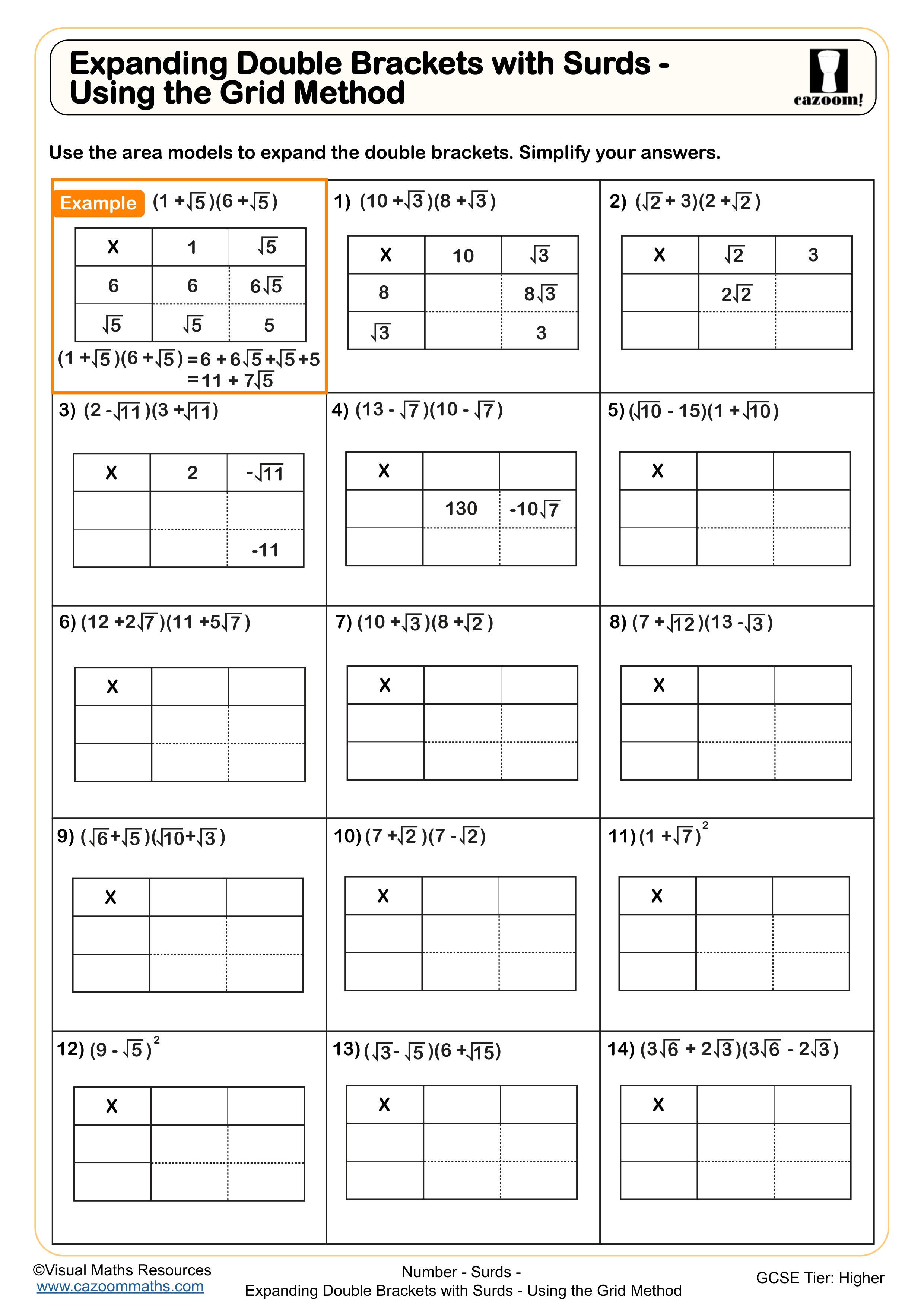
Expanding Triple Brackets (A)
Year groups: 10, 11
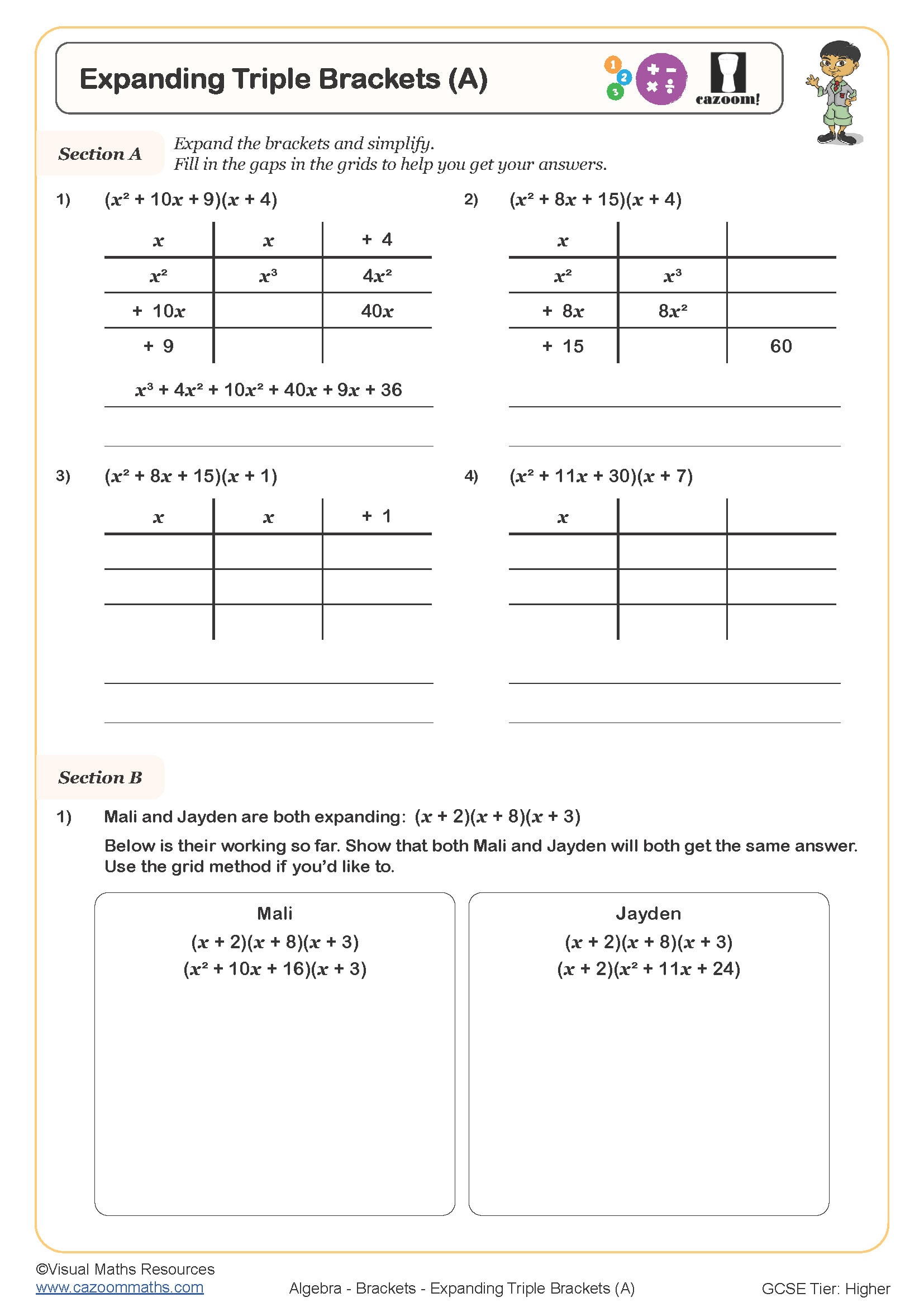
Expanding Triple Brackets (B)
Year groups: 10, 11
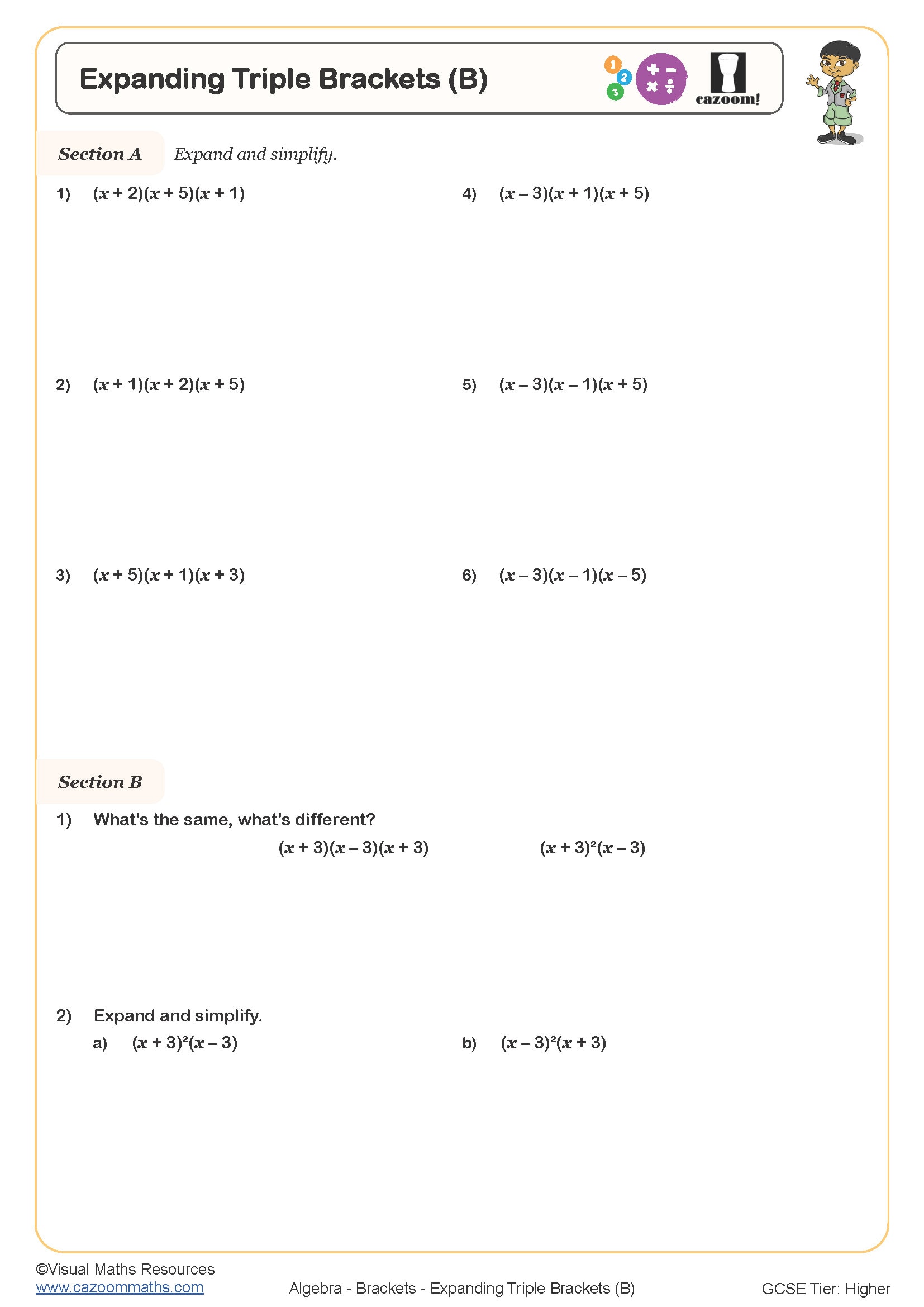
PRINTABLE PDF EXPANDING BRACKETS WORKSHEETS WITH ANSWERS
Check out and download our Expanding Brackets Worksheets that will improve your child’s or student’s knowledge of mathematical equations related to the expansion of Single, Double and Triple Brackets. These worksheets are created in easy-to-download PDF format, include answers, and are designed to simplify complex mathematical equations. These Expanding Brackets worksheets are excellent resources that will make the whole learning fun and interesting, helping your students or children improve at solving various critical maths problems.
Understanding The Concept Of Expanding Brackets
In mathematics understanding how to expand brackets is just like peeling an onion—gradually revealing each layer. It’s like multiplying each item within the bracket by the number which simplifies expressions and brings clarity. Essentially the basics of this technique in maths help your children and students break down any complex mathematical problems into manageable ones much like reaching the core of an onion.
How Can We Expand Brackets?
Expanding brackets is a handy technique in maths, multiplying terms inside a bracket by the outside term. It’s like stretching out the contents to make the expression more straightforward.
Let’s look at the expression: (2+1)(3−2)(5+2).
Expand the first two brackets: 2×3=6, 2×−2=−4, 1×3=3, and 1×−2=−2.
Combining the results, we get 6−4+3−2=3.
Now, multiply the result by the third bracket: 3×5=15 and 3×2=6.
Combine those: 15+6=21.
So, the expanded result of (2+1)(3−2)(5+2) is 21.
Your students can get comfortable expanding multiple brackets by practising with various numbers, and our worksheets provide lots of expanding brackets practice.
Use of the Expanding Brackets in Real Life
Learning about expanding brackets in maths has real-world relevance. Think about shopping: if you buy three sets of items, each with different items priced differently, you will use the expanding brackets principle to determine your total cost. Or when splitting costs among friends at a restaurant, working out shared bills involves similar logic. This skill simplifies complex situations into more manageable tasks, allowing us to make sense of varied scenarios in our daily lives quickly. From budgeting to project planning, understanding expanding brackets can make everyday calculations more precise and more accurate. It’s maths in action, directly aiding our decision-making.